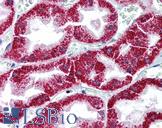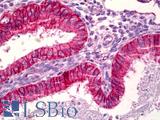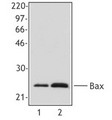Login
Registration enables users to use special features of this website, such as past
order histories, retained contact details for faster checkout, review submissions, and special promotions.
order histories, retained contact details for faster checkout, review submissions, and special promotions.
Forgot password?
Registration enables users to use special features of this website, such as past
order histories, retained contact details for faster checkout, review submissions, and special promotions.
order histories, retained contact details for faster checkout, review submissions, and special promotions.
Quick Order
Products
Antibodies
ELISA and Assay Kits
Research Areas
Infectious Disease
Resources
Purchasing
Reference Material
Contact Us
Locations
Orders Processing,
Shipping & Receiving,
Warehouse
2 Shaker Rd Suites
B001/B101
Shirley, MA 01464
Production Lab
Floor 6, Suite 620
20700 44th Avenue W
Lynnwood, WA 98036
Telephone Numbers
Tel: +1 (206) 374-1102
Fax: +1 (206) 577-4565
Contact Us
Additional Contact Details
Login
Registration enables users to use special features of this website, such as past
order histories, retained contact details for faster checkout, review submissions, and special promotions.
order histories, retained contact details for faster checkout, review submissions, and special promotions.
Forgot password?
Registration enables users to use special features of this website, such as past
order histories, retained contact details for faster checkout, review submissions, and special promotions.
order histories, retained contact details for faster checkout, review submissions, and special promotions.
Quick Order
| Catalog Number | Size | Price |
|---|---|---|
| LS-C3493-100 | 100 µg | $508 |
Monoclonal Mouse anti‑Human BAX Antibody (N‑Terminus, IF, WB) LS‑C3493
Monoclonal Mouse anti‑Human BAX Antibody (N‑Terminus, IF, WB) LS‑C3493
Antibody:
BAX Mouse anti-Human Monoclonal (N-Terminus) Antibody
Application:
IF, WB, IP, ELISA
Reactivity:
Human, Mouse, Rat
Format:
Unconjugated, Unmodified
Toll Free North America
 206-374-1102
206-374-1102
For Research Use Only
Overview
Antibody:
BAX Mouse anti-Human Monoclonal (N-Terminus) Antibody
Application:
IF, WB, IP, ELISA
Reactivity:
Human, Mouse, Rat
Format:
Unconjugated, Unmodified
Specifications
Description
BAX antibody LS-C3493 is an unconjugated mouse monoclonal antibody to BAX (N-Terminus) from human. It is reactive with human, mouse and rat. Validated for ELISA, IF, IP and WB.
Target
Human BAX
Synonyms
BAX | BCL2-associated X protein | Bcl2-L-4 | Apoptosis regulator BAX | Bcl-2-like protein 4 | BCL2L4
Host
Mouse
Reactivity
Human, Mouse, Rat
(tested or 100% immunogen sequence identity)
Clonality
IgG1
Monoclonal
Conjugations
Unconjugated
Purification
Purified
Modifications
Unmodified
Immunogen
KLH-conjugated peptide corresponding to amino acids 12-24 located near the N-Terminus common to human, mouse and rat Bax.
Epitope
N-Terminus
Specificity
Recognizes human Bax (Mr 20-22kD). Species cross-reactivity: Mouse and rat.
Applications
- Immunofluorescence
- Western blot (1 µg/ml)
- Immunoprecipitation
- ELISA
Usage
Immunoprecipitation. Immunofluorescence staining. Western Blot. Enzyme-Linked-Immunosorbent-Assay (ELISA). Western Blot: 1 ug/ml.
Presentation
100 mM borate buffered saline, pH 8.0. No preservatives or amine-containing buffer salts added.
Storage
Short term: 4°C; Long term: Add glycerol (40-50%) -20°C.
Restrictions
For research use only. Intended for use by laboratory professionals.
About BAX
Publications (0)
Customer Reviews (0)
Featured Products
Species:
Human, Monkey, Mouse, Rat, Bovine, Pig, Rabbit
Applications:
Western blot
Species:
Human, Monkey, Mouse, Rat
Applications:
IHC, IHC - Paraffin, Immunoprecipitation
Species:
Human, Mouse, Rat
Applications:
IHC, IHC - Paraffin, Immunofluorescence, Western blot, Peptide Enzyme-Linked Immunosorbent Assay
Species:
Human
Applications:
IHC, Western blot, Immunoprecipitation
Request SDS/MSDS
To request an SDS/MSDS form for this product, please contact our Technical Support department at:
Technical.Support@LSBio.com
Requested From: United States
Date Requested: 4/26/2024
Date Requested: 4/26/2024












